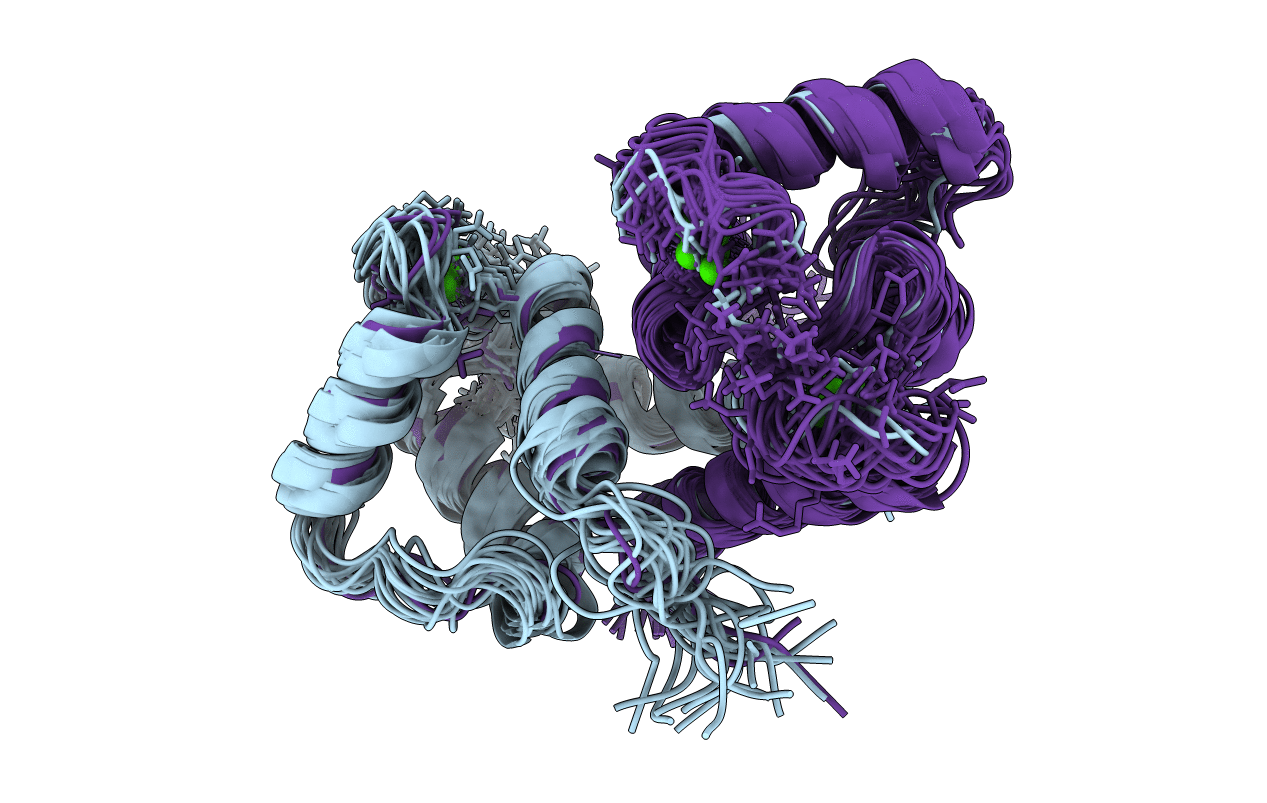Abstact
The three-dimensional structure of Ca2+-bound rat S100B(betabeta) has been determined using data from a series of two-dimensional (2D), three-dimensional (3D), and four-dimensional (4D) nuclear magnetic resonance (NMR) experiments. Each S100beta subunit (91 residues) contains four helixes (helix 1, E2-R20; helix 2, K29-N38; helix 3, Q50-D61; and helix 4, F70-A83) and one antiparallel beta-sheet (strand 1, K26-K28; and strand 2, E67-D69) which brings the normal and pseudo EF-hands together. As found previously for rat apo-S100B(betabeta) [Drohat, A. C., et al. (1996) Biochemistry 35, 11577-11588], helixes 1, 1', 4, and 4' associate to form an X-type four-helix bundle at the symmetric dimer interface. Additionally, Ca2+ binding does not significantly change the interhelical angle of helixes 1 and 2 in the pseudo EF-hand (apo, Omega1-2 = 132 +/- 4 degrees; and Ca2+-bound, Omega1-2 = 137 +/- 5 degrees). However, the interhelical angle of helixes 3 and 4 in the normal EF-hand (Omega3-4 = 106 +/- 4 degrees) changed significantly upon the addition of Ca2+ (DeltaOmega3-4 = 112 +/- 5 degrees) and is similar to that of the Ca2+-bound EF-hands in calbindin D9K, calmodulin, and troponin (84 degrees </= Omega </= 128 degrees). Further, the four helixes within each S100beta subunit form a splayed-type four-helix bundle (four perpendicular helixes) as observed in Ca2+-bound calbindin D9K. The large Ca2+-dependent conformational change involving helix 3 exposes a cleft, defined by residues in the hinge region, the C-terminal loop, and helix 3, which is absent in the apo structure. This surface on Ca2+-bound S100B(betabeta) is likely important for target protein binding.



